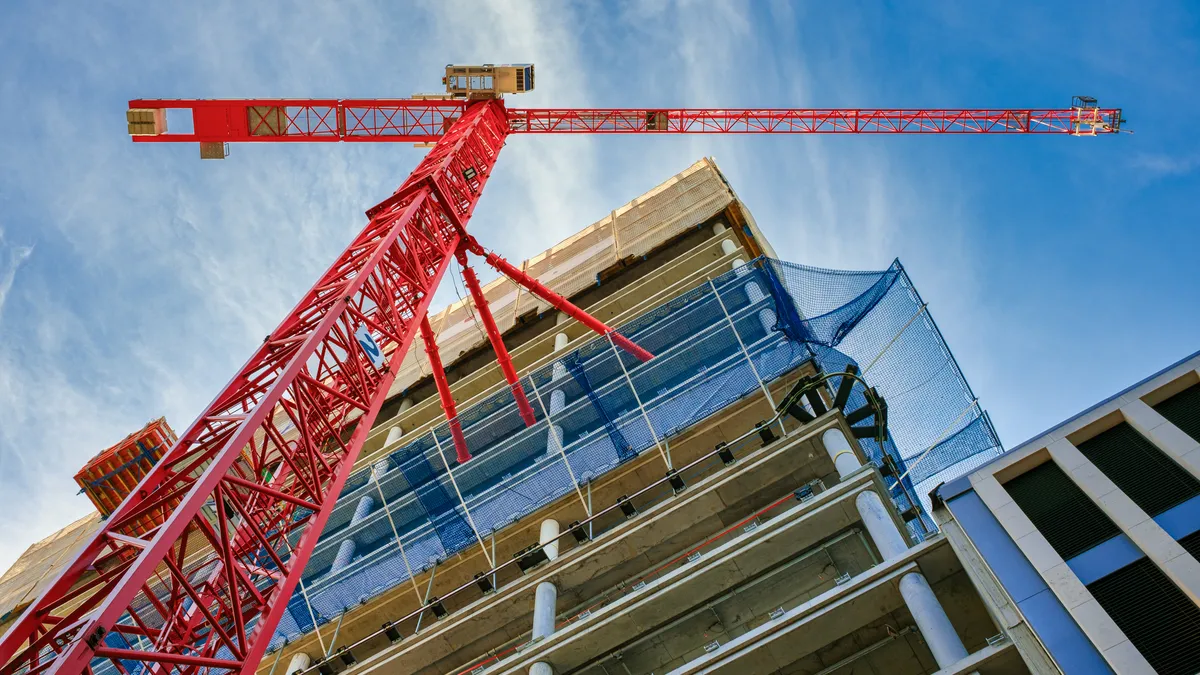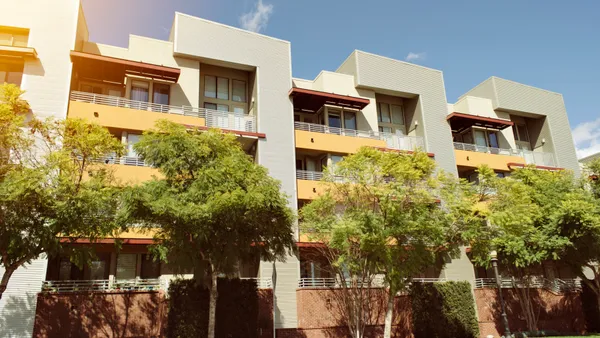Dive Brief:
- Starts of buildings with five or more units fell 11.2% in June to a seasonally adjusted annualized pace of 482,000, according to the most recent starts data report from the U.S. Department of Housing and Urban Development and the U.S. Census Bureau.
- With financing for new apartments proving challenging to obtain, permits for buildings with five or more units plummeted 33.1% to a seasonally adjusted rate of 467,000. Completions of properties with five or more units fell 2.5% to 476,000.
- Overall housing starts also fell in June, dropping 8.1% to 1.4 million. Completions rose 5.5% to 1.5 million, while permits dropped 15.3% to 1.4 million.
Dive Insight:
For many apartment developers that started projects in 2021 and 2022, this year has been a time to pause.
Palm Beach Garden, Florida-based Eastwind Development closed a couple of projects in 2022 that are currently under construction. “We have a number of deals in the pipeline,” Eastwind President Jack Weir told Multifamily Dive. “But we're actually not closing any this year. We'll close deals next year.”
Interest rate increases and banks tightening their lending are largely to blame for hindering new development. But they’re not the only culprits. “We had floating rate construction loans that were at 3%,” Weir said. “Now, they’re at 8%.”
The collapse of Silicon Valley Bank and Signature Bank have also clogged the debt markets. “The loans that you can get are more conservative,” Weir said. “They might be 55% loan-to-cost as opposed to 65% loan-to-cost. So we have projects that we're working on that are good real estate, but we're not closing on them until next year when we expect some of these conditions to abate a little bit.”
Building costs remain high
Although apartment sales prices have fallen, building costs have remained stubbornly high and held down starts, according to Weir. “In any type of slowdown, you would expect there would be a reduction in construction costs, but that has not been the case,” Weir said. “Homebuilding has picked up again because existing home buyers don’t want to sell their homes and swap a 3% mortgage for a 7% mortgage.”
Single-family starts fell 7.4% to a seasonally adjusted rate of 935,000 in June. They aren’t the only thing buoying construction costs, according to Weir. He points to federal dollars from the Infrastructure Investment and Jobs Act, the CHIPS and Science Act and the Inflation Reduction Act boosting construction spending.
“All of those are sustaining and, in some cases, increasing the price of concrete and metal,” Weir said. “So even other non-residential uses are impacting materials costs.”
Click here to sign up to receive multifamily and apartment news like this article in your inbox every weekday.











